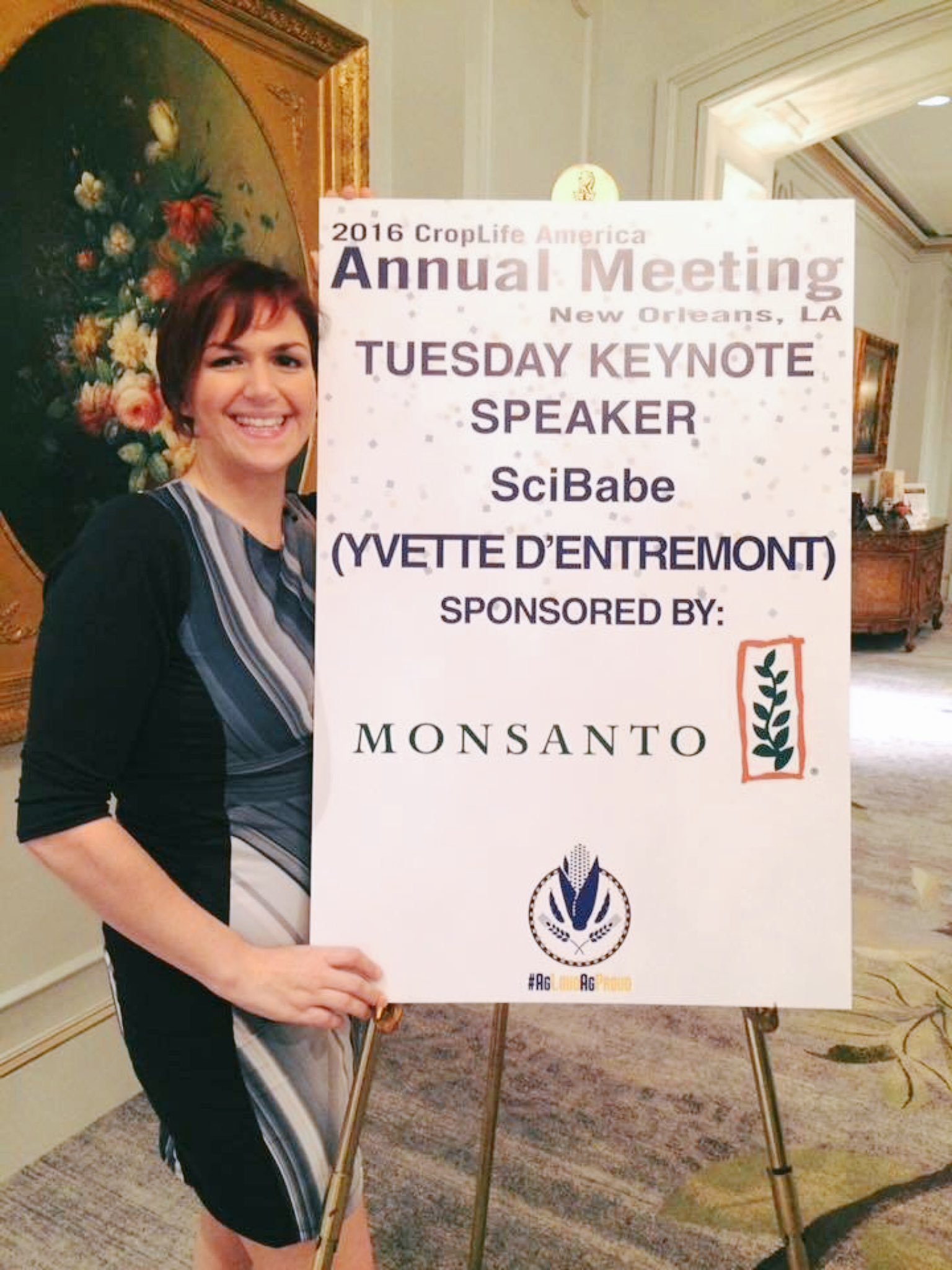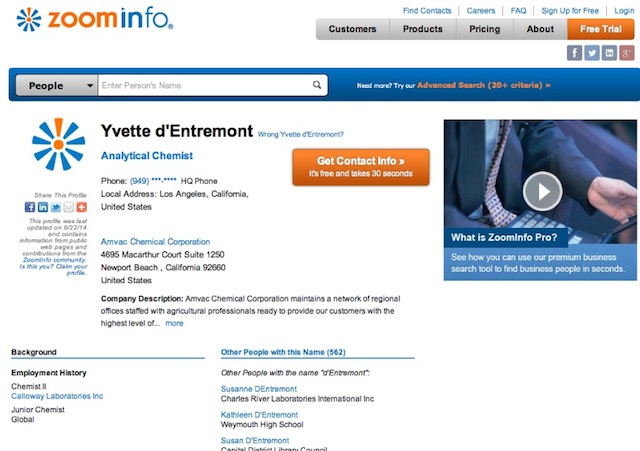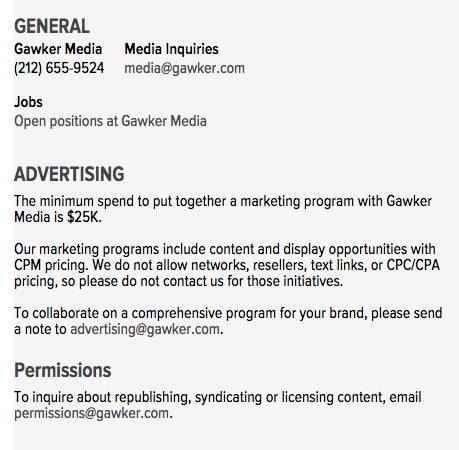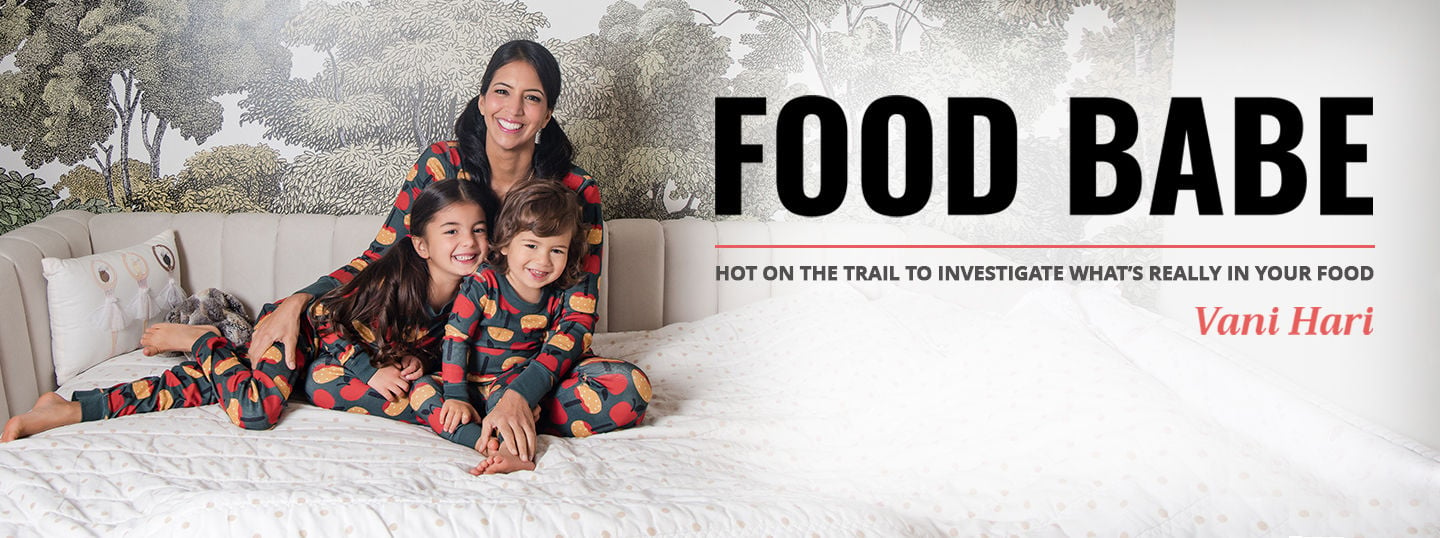Response to Gawker “The Food Babe Blogger is Full of…”
If you are here from Gawker and would like to learn more, I invite you to come over to my about page.
In that very unprofessional and overly profane Gawker blog post, the author says I’m full of $hit, but I’m full of heart, love and hope for a better future, and I know you are too. I want a safer and healthier food system, and some people want to keep the food system just like it is today – broken, corrupt and full of unregulated food additives and chemicals that only improve the bottom line of food and biotech companies and not our health. This is a desperate attempt to stop the food movement.
You have to admit, it’s surely getting ridiculous that we are now arguing that it is GOOD that there are added chemicals in our food. My message is that it’s far better to err on the side of caution. There’s plenty of scientists and consumer organizations that back this message and this writer completely ignores the mountains of evidence that synthetic, carcinogenic and neurotoxic insecticides are bad for human health and the environment. These are not allowed in organic food by government certification. Maybe in the end some of these chemicals are ok to ingest–but I’d rather not take the chance. People like this author are so twisted that they seem to pretending that these multinational conglomerates are doing the US a favor by dumping these (largely untested) chemicals in what we eat.
Let’s explore, who is the author of “The Food Babe Blogger is Full of $hit” is?
UPDATE FEBRUARY 2019: Yvette d’Entremont (aka “SciBabe”) and her ties to the chemical industry are detailed out here. “SciBabe has been a featured speaker at various chemical and food industry sponsored events such as the 2017 Atlantic Farm Women conference sponsored by CropLife and Monsanto, and the 2015 Suppliers Showcase where her talk was sponsored by DuPont. In interviews, she frequently cites her former job in a pesticide lab as the basis for her knowledge about pesticide safety.” Read more here.

- She is undoubtedly pro-chemical and pro-GMO and has proven this fact over and over again but her background might be the most convincing. Her name is Yvette d’Entremont and when she started the “Science Babe” facebook page and business, she worked for Amvac Chemical, as reported in the Seattle Times, “Amvac Chemical in Los Angeles has found a profitable — and controversial — niche by buying manufacturing rights to older pesticides, many of them at risk of being banned or restricted because of safety concerns”. Yes, you read that right, a company that sells dangerous and unsafe chemicals for profit.

Also, I think it’s important to note, Amvac has a collaboration agreement with Monsanto to co-market Roundup ready platforms. The same Roundup that has glyphosate, which has been listed by the IARC and WHO as a probable carcinogen and the same Roundup that is directly associated with GMO crops.

- After she started her blog, she reportedly was terminated from Amvac. See email below I received from her ex-colleague here:
“Dear Ms Vani, I am a research professional of some standing and for that reason I have chosen to use an assumed name. I have been following the progress of Yvette Guinevere d’Entremont (aka ScienceBabe) with some interest as she is a former colleague. I would like to impart some interesting information to you, which may use this for whatever purpose you see fit. What I am about to tell you is easily verifiable. Good science is based on producing original work and publishing in a peer reviewed context, self published armchair science as scibabe.com is peddling gives science a bad name. Taking swipes at the work and opinions of others is not science, unless you have original data that draws other work into question. What makes you and her different is that you don’t claim to be a scientist. If you have solid reasoning, you don’t need to be vitriolic in your posts as science babe is, with much of her abuse directed towards you. Some colleagues and I do not feel this is appropriate, we don’t like bullying, and so here are several easily verifiable facts about science babe that you may wish to point out to her next time you appear in her twitter/blog crosshairs: 1) Yvette Guinevere d’Entremont has no peer reviewed scientific publications. 2) Her master’s thesis from Anglia Ruskin University was not deemed of sufficient quality for publication. 3) Her claim that she was a college professor is laughable, she was an assistant instructor (one level above a TA) at Emmanuel College in Boston for less than 1 year. 4) She is currently being terminated from her position at Amvac for her activities on Scibabe. A description from a senior colleague on seeing Scibabe.com perhaps sums her up best “she’s a not a scientist, she’s a professional button pressor for a scientific company. I could have a talented undergraduate doing her job in less than 2 days”. For obvious reasons I’m not going to put a name to that quote. There’s nothing I’ve revealed here that can’t be easily verified. If I can be of any further assistance, please don’t hesitate to get in touch via the email I have listed on this page. Kind regards.”
Why did Gawker ask for an “all encompassing take down” by a biased former pesticide chemist?


Gawker paid Ms. d’Entremont for this piece – but who paid Gawker?

It’s important to note: Gawker has gotten millions of page views supporting our work here, here, here and here and all of the sudden now they are soliciting negative pieces to get even more traffic.
- Have you ever wondered why Starbucks chooses not to use caramel coloring class IV in their coffee drinks overseas? Don’t we deserve the same safer ingredients here in the United States? Caramel coloring level IV is considered a possible carcinogen by the IRAC and National Toxicology Program and scientists at both the Consumers Union and Center For Science In The Public Interest have petitioned the FDA to regulate it. Caramel Coloring is the most widely used food coloring in the world, which makes it easy to consume excessive amounts. One of the best places to start is getting it out of food that’s already brown – like coffee. It has no nutritional benefits and is only used cosmetically to improve the appearance of food and drinks, yet there are safer alternatives available to food manufacturers. It’s sometimes added unnecessarily to food and drinks that are naturally brown or that are not even visible to the consumer (e.g. baby vitamin drops).
- The Starbucks campaign was indeed successful! Starbucks has already started to remove caramel coloring level IV from their vanilla syrup and whip cream and are removing it from the rest of their drinks. Email from Starbucks 3/2015: “We recently transitioned the vanilla syrup in our US and Canada stores to a new formula which is free from caramel coloring. We prioritized vanilla as it is an ingredient in our whipped cream, so with this one change we removed caramel coloring from many beverages. We are actively working on the rest and don’t have a specific timeline to share at this time.
- My statement that “There is no acceptable level of any chemical to ingest ever” was taken from my book on page 40 from the section regarding ractopamine and growth hormones. My critics took it out of context (after The Atlantic decided to highlight the quote as a side bar). My point was in the context of hormone mimicking chemicals and growth stimulants. Extremely low levels of compounds that mimic hormones work in the body like hormones. That is why I don’t believe there is any acceptable level of these chemicals to ingest, ever. Certainly reducing all synthetic, artificial chemicals is best, but it is difficult to avoid each and every one of them in all amounts.
- There’s a difference between added refined sugar and naturally occurring sugar in fruit juices. I’ve always said to drink minimal fruit juice when consuming green juices. Fruit juice unlike refined sugar, has vitamins, minerals and nutrients and is real food. Obviously I don’t use the word “toxic” to say something will kill you instantly, rather I’m using this term in its common sense and my readers understand that. Sugar is addictive and too much is toxic in the common use of the term.
- The fact that some pesticides are approved for organic farming doesn’t mean that organic farmers are using them. Organic farmers are required to naturally manage their crops to avoid pests and diseases (e.g. crop rotation) prior to using any approved pesticides. Residue testing done by the USDA Pesticide Data Program most often finds less pesticide residue on organic crops according to their data posted on the Pesticide Action Network website. Recent research out of Boise State University found that eating organically reduces your exposure to pesticides. Likewise, Consumer Reports recently tested produce and recommends eating organically to avoid synthetic pesticides. They believe organic is “always the best choice because it is better for your health, the environment, and the people who grow our food”, and I agree! Synthetic chemical pesticides are NOT allowed to be used for food certified by USDA as organic. Organic agriculture is safer for the environment, the water, the birds and bees too.
- Organic milk has been shown to be healthier for you – more omega 3’s and CLA – and it isn’t raised with antibiotics or growth-promoting drugs. Organic cows also graze on grass at least 120 days of the year, and don’t eat Roundup-ready GMO crops that have been doused with glyphosate and bad for our environment.
- There is evidence that eating cruciferous and green leafy vegetables – like Kale – can reduce your cancer risk by protecting cells from DNA damage, inactivating carcinogens and inducing cell death.
- I think it’s very important to avoid GMOs as much as possible and this is why I offered some controversial advice to my readers when eating out. Anyone who mentions this advice as a way to discredit me, conveniently leaves out my references to the evidence that GMOs can increase risk for allergies (see links for scientific studies, summaries and source data below)
I have addressed the other statements made in the Gawker post here – check it out…
- https://usrtk.org/gmo/sci-babe-yvette-dentremont/
SciBabe says eat your pesticides. But who is paying her? - http://www.ncbi.nlm.nih.gov/
pmc/articles/PMC1241559/pdf/ ehp0111-001110.pdf - http://www.ncbi.nlm.nih.gov/
pmc/articles/PMC1241560/pdf/ ehp0111-001114.pdf - http://www.nap.edu/openbook.
php?record_id=10977&page=114 - http://www.nap.edu/openbook.
php?record_id=10977&page=119 - http://www.
responsibletechnology.org/gmo- dangers/health-risks/articles- about-risks-by-jeffrey-smith/ Genetically-Engineered-Foods- May-Cause-Rising-Food- Allergies-Genetically- Engineered-Corn-June-2007 - http://www.ncbi.nlm.nih.gov/
pubmed/10354369 - http://www.ncbi.nlm.nih.gov/pubmed/10353588
- http://www.ncbi.nlm.nih.gov/
pubmed/10657055 - http://www.epa.gov/scipoly/
sap/meetings/2000/october/ octoberfinal.pdf - http://gmwatch.org/latest-
listing/45-2006/1657-new- report-on-bt-cotton-and- farmers-health-published- - http://www.
responsibletechnology.org/gmo- dangers/health-risks/articles- about-risks-by-jeffrey-smith/ Genetically-Engineered-Foods- May-Cause-Rising-Food- Allergies-Genetically- Engineered-Soybeans-May-2007



